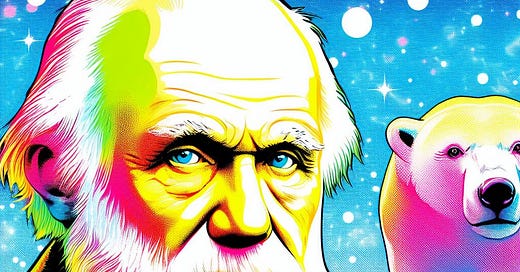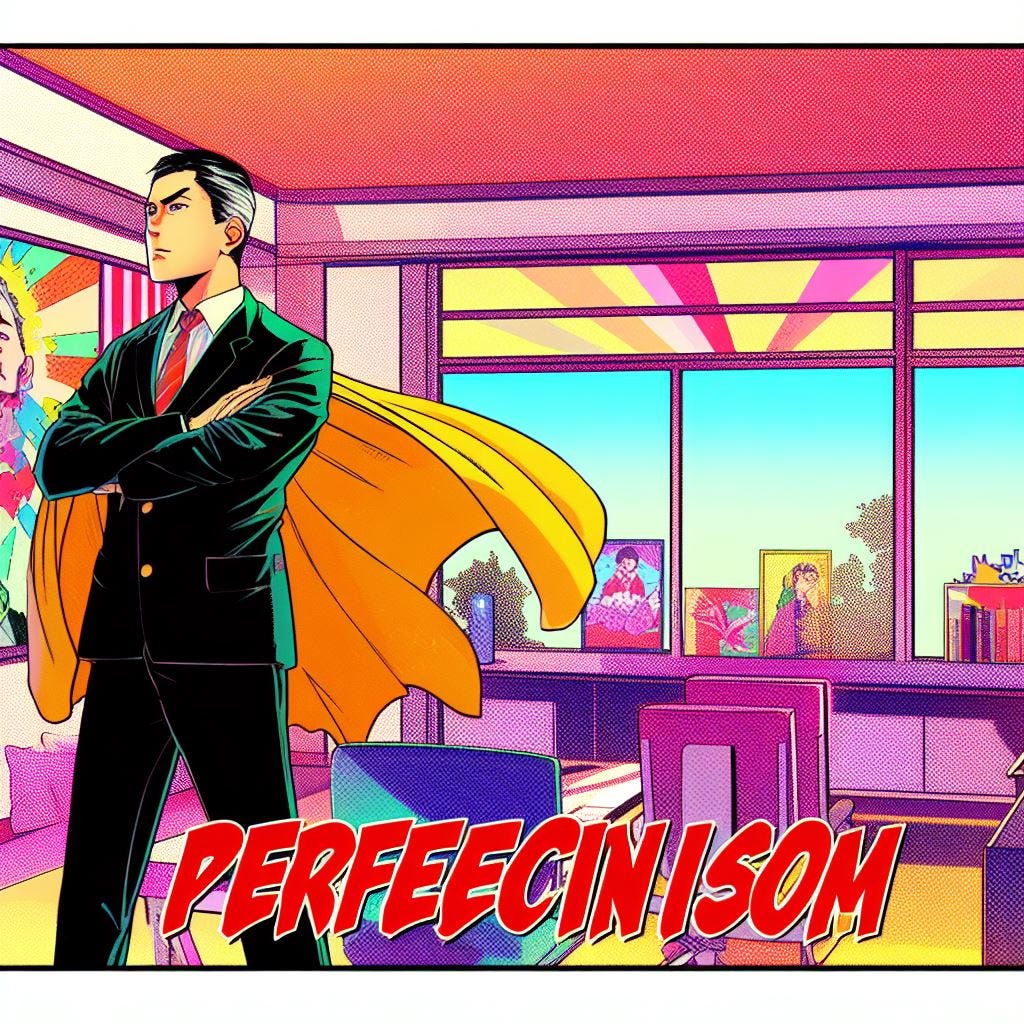Charles Darwin's theory of evolution popularised the phrase "survival of the fittest." This term is often misunderstood as referring to the physically strongest, fastest, or otherwise superior organism. But Darwin actually meant something different. His concept of "fitness" referred to how well an organism is adapted to its environment and suited to the "task" of surviving and reproducing.
This insight about the interplay between organisms and their environments lays the foundation for the field of ecological psychology. Success is not about overcoming or dominating one's surroundings, but aligning with them. Darwin recognised that "fitness" is dynamic - as environments change, organisms must adapt.
Consider two species. Great white sharks thrive in oceans worldwide. But put one in an aquarium, and its stellar fitness instantly evaporates. Polar bears are exquisitely adapted to the Arctic with specialised features like insulating fur and fat layers, snowshoe-like paws, sharp teeth for hunting seals and even isolated social skills mean they don’t play well with others. But those assets become liabilities in other habitats. Polar bears and brown bears are cousins, but they won't be house swapping for the holiday season.
Ecological psychology examines the functional relationships between a person, their environment, and the task at hand. I call this the 3S model - Something (task) is always done Somewhere (environment) by Someone (person). Behaviour emerges from how these 3 elements interact. As a complex dynamic system, you cannot optimise or change them independently.
Much behavioural change focuses too narrowly on the individual. We rely heavily on psychometrics and even medicalise some cognitive diversity to make people conform to standardised environments. But we lack tools for systematically analysing how environments shape behaviours through affordances and constraints compared to the number of tools for analysing the ‘someone’. Imagine if we could equally analyse the environment?
The Vietnam War revealed how radically someone's behaviour can transform when their environment changes. Studies by Lee Robins found that 20% of U.S. soldiers in Vietnam experienced heroin addiction. This posed a major problem, as addiction proved stubbornly hard to overcome at home. If the 20% of the mobilised force returned addicted, it seemed likely to overwhelm support systems.
Yet contrary to fears, only 1% relapsed within a year after coming home, despite 10% trying heroin again. How could the same someone exhibit such different drug use behaviours in two somewheres? Ecological psychology explains how Vietnam's environment encouraged heroin use through Roger Barker's four behaviour setting elements:
Physical - Heroin's widespread availability and proximity to soldiers made access easy.
Temporal (time) - The constant risk of death meant many days could be someone’s last.
Social - Fellow soldier role models normalised use, while lack of family support removed a deterrent and a support system.
Cultural - Values of toughness encouraged use, unlike the stigma against drugs at home.
By returning to the U.S., soldiers experienced a new environment where these invitations to act (affordances) dramatically changed:
Physical - Heroin's much lower availability and access prevented habitual use.
Temporal - No longer facing imminent death reduced the desire to "escape."
Social - Family presence offered different support structures, and lack of using peers removed social pressure.
Cultural - Expectations to demonstrate strength and avoid drug use stigma constrained use.
This environmental shift, combined with the new task of civilian life, offered new invitations to act meaning relapsing even for soldiers previously hooked on heroin reduced. Focusing on the individual proved far less effective.
The Vietnam case illustrates a key lesson for behaviour change: look not just at the someone, but their somewhere. Walk in their shoes and identify environmental invitations to act driving undesirable actions. Then consider how to reduce those undesirable invitation and amplify desirable ones, promoting positive affordances.
Leaders should view themselves as environment designers. Darwin’s "survival of the fittest" is not just about the organism, but the fit between the something being done somewhere, by someone. Let's give equal focus to the Something being done Somewhere by Someone and not isolate each one.
Applying the 3S Model
The 3S framework examines how Something is done Somewhere by Someone. "Something" is the task or behavior. "Somewhere" is the physical, social, cultural, and temporal environment. "Someone" is the individual.
How can we apply the 3S model to promote positive behaviour change? Here are some steps:
Identify the target behaviour you want to encourage or discourage. Be specific in defining the "something."
Observe people in their natural environments and take an inventory of factors that may influence the behaviour. Consider physical, temporal, social, and cultural dimensions.
Look for environmental elements that either invite or inhibit the target behavior. These are the affordances.
Brainstorm modifications to amplify positive affordances and introduce constraints against unwanted behaviours. Consider changes across all four environment dimensions.
How clear is the something? Can people articulate and agree their part of the something?
Implement environmental modifications and continue observing to see their impact on behavior. Further tweak the environment to strengthen positive outcomes.
Monitor for unintended consequences and be prepared to iterate. Behaviour change often requires ongoing evolution of environments over time.
Fostering Innovation By Changing the Somewhere
Innovation often requires taking risks and learning from failures. How can leaders shape environments to promote these behaviours? The 3S model offers guidance.
Environments contain what ecological psychology calls ‘affordances’ - elements that invite desirable and undesirable behaviours. Thoughtful environmental design can send signals that encourage innovation.
Let's apply the 3S model to foster more risk-taking and tolerance of failure. First, identify the target "something": more experimentation and learning through mistakes.
Next, conduct observations to inventory affordances and constraints across the four environment dimensions:
Physical/Digital - Poor prototyping resources constrain quick tests of ideas.
Temporal - Rigid deadlines limit time for iterations.
Social - Lack of collaborators and psychological safety reduces feedback and support.
Cultural - Perfectionism and fear of mistakes inhibits trial-and-error.
We can introduce changes to reshape these innovation barriers:
Physical/Digital - Provide shared working spaces that afford feedback and digital environments that can quickly get feedback and test ideas such as sandboxes.
Temporal - Adjust project timelines to incorporate testing phases.
Social - Create cross-functional innovation teams and co-locate with customers and the user environment.
Cultural - Destigmatise failure through leadership storytelling. Name your rooms after innovative and left field products or companies (avoid individuals if you want to invite collaboration over individual brilliance).
Continually monitor results and refine the context to strengthen desired behaviours. For example, celebrate failed efforts that yielded useful learnings.
Summary
The 3S model expands options for leadership influence. Rather than futile attempts to directly force behavioural changes in people, modify environments to elicit innovation.
Darwin recognised that organisms evolve to fit contexts. Similarly, we can proactively shape surroundings to bring out our best. The "fittest" behaviors emerge from aligning affordances, constraints, and tasks.
Leaders are ultimately environment architects. Directing change solely at the individual misses powerful situational shaping forces. To build adaptive cultures, design holistic contexts using the 3S framework - Something done Somewhere by Someone.
This demonstrates how the ecological psychology lens expands options for behaviour change beyond just training programs or penalties targeting the individual. Environments exert powerful influence. As Darwin recognised, adapting and aligning our somethings, somewhere & someones can help ensure the "fittest" behaviours prevail.








